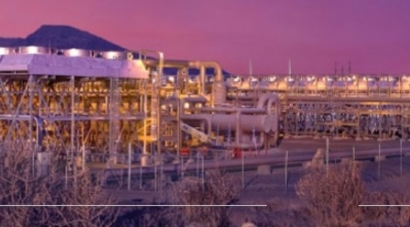These projects will explore opportunities for integrating geothermal energy into various functions in support of the Beyond Batteries objectives. These include dispatchability, co-production, and hybrid operations to improve grid reliability, resilience, and security.
The selected projects include:
- Brookhaven National Laboratory: Advanced Thermal Shock-Resistant Cement (TSRC) Suitable to Withstand Frequent Thermal Cycling
- Idaho National Laboratory: Dynamic Earth Energy Storage: Terawatt-Year, Grid-Scale Energy Storage using Planet Earth as a Thermal Battery
- Idaho National Laboratory: Geo-Solar Hybrid Power Plant with Subsurface Thermal Energy Storage to Increase Geothermal Plant Dispatchability
- Lawrence Berkeley National Laboratory: Analysis of Curtailment of Geothermal Power Generation in the California Electricity Market and Beyond – Temporal Variability and Future Trends
- National Renewable Energy Laboratory: Exploring the Role of Geothermal in Enhancing Cold-Climate Net Zero Communities
- National Renewable Energy Laboratory: Alternative CAES Technology Using Depleted Unconventional Gas Wells and Subsurface Thermal Energy Storage
- Oak Ridge National Laboratory: A Mobile Sorption-Based Thermal Battery for Harvesting Geothermal Energy
- Oak Ridge National Laboratory: Novel Heat Pump Integrated Underground Thermal Energy Storage for Shaping Electric Demand of Buildings
These projects support the objectives of the DOE Grid Modernization Initiative by exploring ways to utilize geothermal energy in order to create the modern grid of the future.
The GMI works across DOE with the goal of developing the tools and technologies that measure, analyze, predict, protect, and control the grid of the future. As part of the GMI, the Beyond Batteries Initiative considers energy storage holistically. It focuses on opportunities for flexible generation, controllable loads, and new approaches to the broader concept of energy storage to effectively mimic many of the benefits of large scale batteries and to increase the reliability and resilience of the U.S. energy systems.


